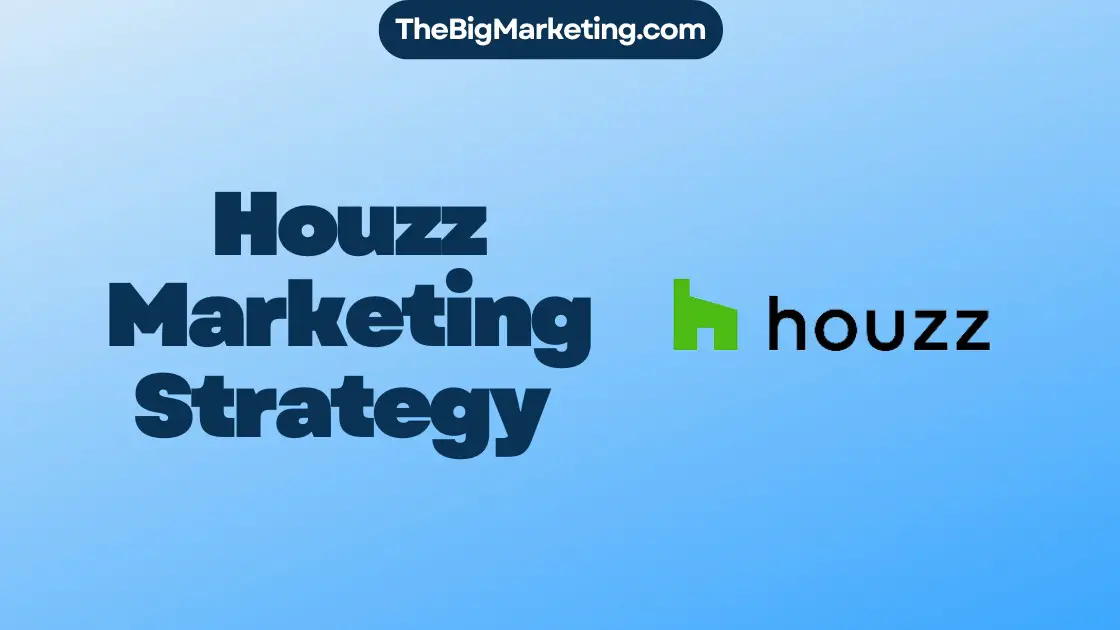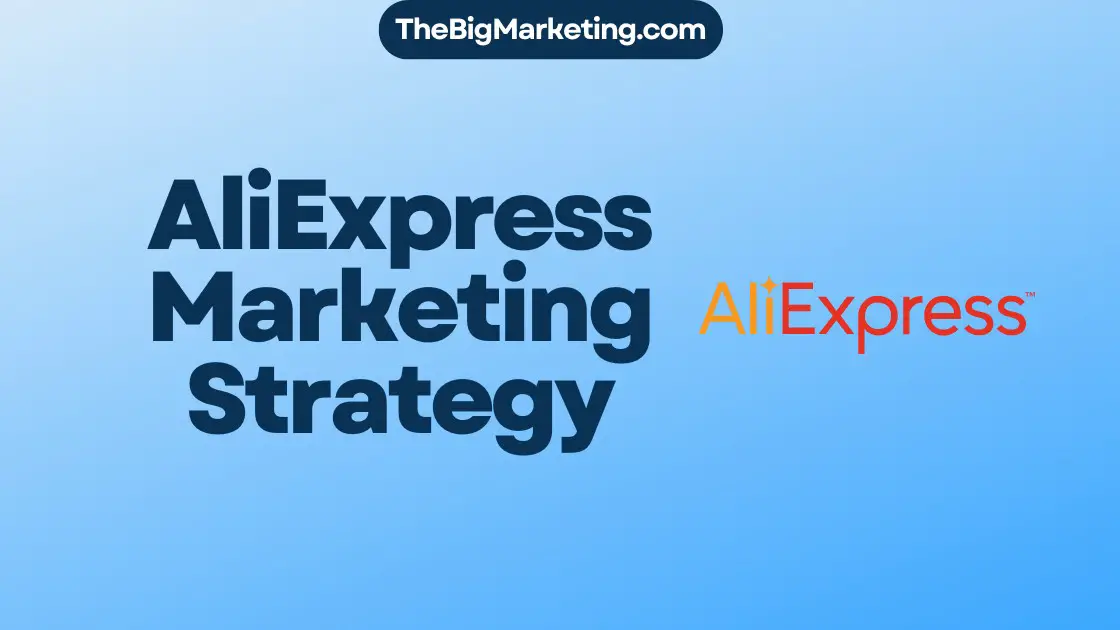MSP marketing is a crucial strategy for Managed Service Providers (MSPs) to enhance brand exposure, educate potential customers about their services, and generate high-value leads for business growth. It differs from sales strategies and focuses on brand awareness, education, and lead generation.
A well-developed MSP marketing plan includes a marketing audit, customer personas, competitive analysis, value proposition development, marketing goals, budget allocation, selection of marketing tactics, execution of campaigns, measurement of outcomes, and adjustment for future optimization.
Familiarity with marketing terms such as B2B, call to action, conversion, content marketing, evergreen, lead nurturing, landing page, organic traffic, personas, PPC, qualified lead, SEO, and value proposition is essential.
Key Takeaways:
- MSP marketing is essential for MSPs to enhance brand exposure, educate potential customers, and generate high-value leads.
- It focuses on brand awareness, education, and lead generation.
- A well-developed MSP marketing plan includes various components such as a marketing audit, customer personas, competitive analysis, value proposition development, and budget allocation.
- Effective execution, measurement of outcomes, and future optimization are vital for success.
- Familiarity with marketing terms is essential for understanding and implementing MSP marketing strategies.
Why Do MSPs Need a Marketing Strategy?
Managed Service Providers (MSPs) are no different than other businesses when it comes to the need for a solid marketing strategy. In fact, an effective marketing strategy is essential for MSPs to enhance their brand exposure, reach prospective audiences, and showcase the value of their services and offerings.
While sales strategies focus primarily on generating revenue, marketing strategies play a unique role in educating and informing potential customers about the business value MSPs can provide. By implementing a well-crafted marketing strategy, MSPs can effectively engage prospects, generate inbound leads, and ultimately grow their business and revenue.
A marketing strategy also offers an opportunity for MSPs to educate their potential customer base about the services they offer and the value they can bring to businesses. By effectively communicating the benefits and advantages of their offerings, MSPs can establish themselves as industry leaders and build trust with their prospective audiences.
Furthermore, a strategic marketing approach helps MSPs target high-value leads that are more likely to convert into loyal customers. By understanding the needs and pain points of their target audience, MSPs can tailor their marketing efforts to address specific challenges and provide tailored solutions.
Implementing a marketing strategy also ensures the satisfaction of existing customers by consistently providing valuable content and updates. By nurturing relationships with loyal clients, MSPs can encourage customer loyalty and foster long-term partnerships.
The Importance of Brand Exposure
Brand exposure is a critical aspect of any marketing strategy for MSPs. By creating a strong brand presence and increasing visibility, MSPs can position themselves as industry leaders and attract prospective customers who are actively seeking solutions to their IT needs.
It is through an effective marketing strategy that MSPs can showcase their expertise and highlight the unique value they bring to the table. Whether it’s through thought leadership content, case studies, or testimonials, a well-executed marketing strategy enables MSPs to emphasize their strengths and differentiate themselves from competitors.
Moreover, a marketing strategy provides an opportunity for MSPs to leverage various marketing tactics to reach their target audience effectively. This includes utilizing digital platforms such as social media, email campaigns, and content marketing to engage prospective customers and drive brand awareness.
Generating High-Value Leads
A successful marketing strategy enables MSPs to attract high-value leads that are more likely to convert into customers. By understanding their target audience and tailoring their messaging accordingly, MSPs can effectively communicate the value of their services and solutions, ultimately driving qualified leads.
Marketing tactics such as content marketing, search engine optimization (SEO), and lead generation campaigns contribute to the growth of an MSP’s potential customer base. By utilizing these strategies, MSPs can attract prospects who are actively seeking IT services and are more likely to convert into paying customers.
What is in an MSP Marketing Plan?
An MSP marketing plan is a strategic document that outlines the marketing goals and actionable steps required to achieve the marketing strategy. It serves as a roadmap for MSPs to effectively promote their services and attract the right audience. Let’s take a closer look at the key components that make up an MSP marketing plan:
1. Marketing Audit
Before developing a marketing plan, it’s crucial to conduct a comprehensive marketing audit. This involves assessing existing marketing assets and identifying areas that need improvement. By understanding your current position, you can make informed decisions about the next steps.
2. Customer Personas
Creating customer personas is an essential aspect of an MSP marketing plan. These personas represent your target audience and help you tailor your marketing efforts to meet their specific needs and preferences. By understanding your audience better, you can create targeted campaigns that resonate with them.
3. Competitive Analysis
A competitive analysis allows you to gain insights from your competitors’ marketing strategies. By understanding what works for them and what doesn’t, you can learn valuable lessons and develop unique selling propositions that differentiate your MSP from the competition.
4. Value Proposition
A strong value proposition is what sets your MSP apart from others in the market. It defines the unique value your services provide to customers and highlights the benefits they can expect. A clear and compelling value proposition is essential for attracting customers and convincing them to choose your MSP.
5. Marketing Goals
Setting clear and measurable marketing goals is a crucial step in an MSP marketing plan. These goals should align with your overall business objectives and be specific, achievable, realistic, and time-bound. They serve as a benchmark for evaluating the success of your marketing efforts.
6. Marketing Budget
Allocating a marketing budget is necessary to execute the planned marketing activities effectively. It involves determining how much you are willing to invest in marketing and allocating funds to different tactics and channels based on their expected returns.
7. Marketing Tactics
Selecting the right marketing tactics is essential to reach your target audience effectively. These tactics can include content marketing, social media marketing, search engine optimization (SEO), email marketing, events, and more. Choosing the right mix of tactics ensures maximum visibility and engagement with your target audience.
8. Execution of the Plan
Once the plan is in place, it’s time to execute it. This involves implementing the chosen marketing tactics, creating content, launching campaigns, and consistently monitoring progress. A well-executed plan increases your chances of achieving your marketing goals.
9. Measurement of Outcomes
To determine the success of your marketing efforts, it’s crucial to measure the outcomes. This involves tracking key metrics such as website traffic, conversion rates, leads generated, and customer acquisition. By analyzing these data, you can identify areas for improvement and make data-driven decisions moving forward.
10. Adjustment for Future Optimization
A marketing plan is not set in stone. It’s important to regularly review and adjust the plan based on the insights gained from measurement and analysis. By continuously optimizing your marketing plan, you can stay ahead of the competition and achieve long-term success.
An effective MSP marketing plan encompasses all these components and provides a strategic roadmap for achieving your marketing goals. By carefully planning, executing, measuring, and adjusting your marketing efforts, you can enhance your brand visibility, attract high-value leads, and drive business growth.
MSP Email Marketing
Email marketing is a crucial channel for reaching prospects and staying in touch with existing clients. As part of your marketing strategy, targeted emails should be sent directly to your customer’s inbox, providing them with valuable and relevant information about your brand, promotional offers, and how your services can benefit them.
When crafting your email content, it’s important to consider your targeted audience and ensure that your message aligns with your overall marketing strategy. By including compelling call-to-action (CTA) buttons and links throughout your emails, you can encourage readers to take specific actions, such as registering for a demo, getting started with your services, contacting your team, or subscribing to your newsletter.
Here are some examples of effective CTAs that you can include in your email marketing campaigns:
- Register for a demo
- Get started
- Follow us on social media
- Contact us
- Sign up for our newsletter
- Read our latest blog post
- Learn more about our services
- Complete a form
- Watch our tutorial videos
- Subscribe for updates
- Find out more
- Try our free trial
- Complete a survey
By including relevant and persuasive CTAs in your emails, you can guide your readers towards taking actions that will ultimately benefit your business. Remember to test different CTAs to determine which ones resonate best with your audience, and make adjustments to your email marketing strategy accordingly.
| Email Marketing Pros | Email Marketing Cons |
|---|---|
| Direct communication with prospects and existing clients | Potential for emails to be marked as spam |
| Ability to customize and personalize content | Increased competition in the inbox |
| Cost-effective compared to traditional marketing channels | Need to continually update and maintain email lists |
| Metrics and analytics available to track performance | Requires ongoing content creation and optimization |
MSP Inbound Marketing
MSP inbound marketing is an effective strategy that focuses on attracting potential customers and prompting them to reach out to the MSP for further information. It utilizes various digital marketing channels, such as social media and websites, to engage with prospects and guide them through the sales process.
One of the key objectives of MSP inbound marketing is to showcase the MSP’s expertise and build trust with potential customers. By providing valuable and informative content, the MSP can establish itself as a credible and reliable source, positioning itself as a trusted advisor in the industry.
Social media platforms play a vital role in MSP inbound marketing, as they allow the MSP to connect with a wide audience and share relevant content. Through targeted social media campaigns, the MSP can attract potential customers who are actively seeking solutions related to their business needs.
Prospect Outreach through Websites and Social Media
Websites are another essential component of MSP inbound marketing. A well-designed and user-friendly website serves as a digital storefront, providing prospects with valuable information about the MSP’s services, industry expertise, and success stories. It also acts as a primary touchpoint for potential customers to inquire further or request a consultation.
Social media platforms provide an opportunity for the MSP to engage with the target audience on a more personal level. By consistently sharing valuable content, such as blog posts, industry news, and tips, the MSP can capture the attention of potential customers and nurture relationships over time.
To expedite the sales process, MSP inbound marketing focuses on guiding prospects through each stage of their buyer’s journey. By strategically providing content that aligns with their needs and pain points, the MSP can keep prospects engaged and move them closer to making a purchasing decision.
Through MSP inbound marketing efforts, the MSP can generate high-quality leads and nurture them throughout the sales process. By building relationships, demonstrating expertise, and consistently delivering value, the MSP can attract potential customers and expedite the sales cycle, ultimately driving business growth.
MSP Outbound Marketing
MSP outbound marketing is an essential component of a comprehensive marketing strategy. It involves proactive outreach efforts by the Managed Service Provider (MSP) to expand its reach and attract new customers. Through various channels such as cold calling, social media, and email, MSPs can effectively engage with general audiences and generate interest in their offerings.
One of the primary methods of MSP outbound marketing is cold calling. This involves reaching out to potential customers directly by phone, presenting the MSP’s services and value proposition. Cold calling allows MSPs to initiate conversations and establish relationships with potential clients, creating opportunities for further engagement and conversion.
Social media platforms also play a crucial role in MSP outbound marketing. By strategically leveraging social media channels, MSPs can build brand awareness, engage with a wider audience, and drive traffic to their website or landing pages. Sharing relevant and valuable content, participating in industry discussions, and actively responding to inquiries can help MSPs establish themselves as industry authorities and attract new customers.
Email outreach is another effective method of MSP outbound marketing. By sending targeted emails to general audiences, MSPs can deliver personalized messages that highlight their services’ unique value proposition. Email campaigns can provide information about the MSP’s offerings, promotional offers, and calls-to-action that encourages recipients to take desired actions.
This image illustrates the diverse channels and methods used in MSP outbound marketing:
When executed strategically, MSP outbound marketing can expand the MSP’s customer base and generate new business opportunities. It complements inbound marketing activities by actively reaching out to potential customers, increasing brand visibility, and driving lead generation. By leveraging the power of outreach, cold calling, social media, and email, MSPs can effectively connect with general audiences and attract new customers to their services.
Lead Generation
Lead generation is a crucial aspect of any MSP marketing strategy. It involves implementing effective marketing tactics to create a pipeline of potential customers for the sales team. By generating quality leads, businesses can increase their chances of converting prospects into loyal customers.
Marketing Strategy and Pipeline of Customers
Lead generation is an integral part of the overall marketing strategy. It helps businesses identify and attract prospective customers who have shown interest in the products or services offered. By implementing various marketing tactics, businesses can create a steady stream of potential customers, ensuring a continuous flow of opportunities for the sales team.
Effective Marketing Tactics
To generate leads successfully, businesses must employ a range of marketing tactics. Below are some effective strategies:
- Content Marketing: Creating valuable and informative content that resonates with the target audience is an excellent way to attract potential customers and establish credibility.
- Email Marketing: Sending targeted emails to interested prospects helps nurture relationships and encourage them to take action.
- Social Media Marketing: Utilizing social media platforms to engage with potential customers and promote offerings can significantly expand reach and generate leads.
- Online Reviews: Positive reviews and testimonials can inspire trust and encourage potential customers to inquire further.
- Customer Referrals: Encouraging satisfied customers to refer friends and colleagues can lead to quality leads.
- Search Engine Marketing: Utilizing pay-per-click advertising and search engine optimization techniques can improve visibility and attract potential customers actively searching for relevant solutions.
By utilizing a combination of these marketing tactics, businesses can maximize their lead generation efforts and increase the likelihood of converting prospects into customers.
Tracking and Analyzing Leads
Tracking and analyzing leads is essential for refining the lead generation process. By monitoring the effectiveness of different marketing tactics, businesses can make data-driven decisions to optimize their strategies. Analyzing metrics such as conversion rates, engagement levels, and lead quality helps businesses identify areas for improvement and allocate resources more effectively.
| Lead Generation Tactics | Benefits |
|---|---|
| Content Marketing | Establishes thought leadership and attracts highly targeted leads |
| Email Marketing | Nurtures relationships with potential customers and encourages action |
| Social Media Marketing | Expands reach and engages with a broader audience |
| Online Reviews | Builds trust and encourages potential customers to inquire further |
| Customer Referrals | Generates high-quality leads from satisfied customers |
| Search Engine Marketing | Improves visibility and captures potential customers actively searching for solutions |
By implementing an effective lead generation strategy and utilizing the right mix of marketing tactics, businesses can ensure a consistent flow of high-quality leads, supporting the growth and success of their sales team.
MSP Website Development
Having a well-developed MSP website is essential for the success of your digital marketing campaigns. It serves as the foundation for your online presence and acts as a valuable tool to attract potential customers and showcase your services. To ensure your MSP website is effective in driving conversions and generating leads, there are several key elements to consider:
1. Website Design
The design of your MSP website should be visually appealing, professional, and in line with your brand identity. A clean and modern design will help establish credibility and make a positive impression on visitors. It’s important to optimize the layout and navigation to ensure a seamless user experience, guiding visitors to the information they need.
2. Compelling Content
The content on your MSP website should be relevant, informative, and engaging. It should clearly communicate the value of your services and address the pain points of your target audience. Use persuasive language and compelling visuals to captivate visitors and encourage them to explore further. Highlight your expertise and showcase your success stories to build trust and credibility.
3. Easy-to-Find Contact Details
Make it easy for visitors to contact you by prominently displaying your contact details on every page of your website. Include a contact form, phone number, email address, and links to your social media profiles. This will help visitors quickly get in touch with you for inquiries or to request your services.
4. Responsive Design
A responsive design is crucial for ensuring your website looks and functions well on different devices, including desktops, tablets, and mobile phones. Mobile-friendly websites are now a ranking factor in search engine results, and having a responsive design will enhance the user experience and improve your site’s visibility.
5. Fast Loading Time
Optimize your website’s loading time to prevent visitors from bouncing off your site due to slow loading pages. Compress images, minify CSS and JavaScript files, and leverage caching techniques to improve your website’s performance. A fast-loading website will not only enhance the user experience but also improve your search engine rankings.
6. Strategic Calls-to-Action
Include strategic calls-to-action (CTAs) throughout your website to guide visitors towards desired actions. Whether it’s filling out a contact form, requesting a quote, or subscribing to your newsletter, CTAs prompt visitors to take the next step in the buying process. Make sure your CTAs are clear, compelling, and visually distinct to grab visitors’ attention.
7. Search Optimization
Implement search engine optimization (SEO) techniques to boost your website’s visibility and organic traffic. Conduct keyword research and optimize your website’s meta tags, headings, and content to align with search terms your target audience is using. Include relevant alt tags for images and build high-quality backlinks to improve your site’s authority.
| Key Elements of MSP Website Development | Description |
|---|---|
| Website Design | Ensure a visually appealing and professional design that reflects your brand identity. |
| Compelling Content | Create informative and engaging content that highlights the value of your services. |
| Easy-to-Find Contact Details | Prominently display your contact information for visitors to easily reach out to you. |
| Responsive Design | Optimize your website to provide a seamless user experience on various devices. |
| Fast Loading Time | Optimize your website to load quickly and prevent visitors from leaving. |
| Strategic Calls-to-Action | Incorporate clear and compelling CTAs to guide visitors towards desired actions. |
| Search Optimization | Implement SEO techniques to improve your website’s visibility and organic traffic. |
Conclusion
MSP marketing strategies are essential for Managed Service Providers (MSPs) to establish their brand, generate leads, and drive business growth. By understanding their target audience and developing a comprehensive marketing plan, MSPs can effectively reach potential customers and showcase the value of their services.
Email marketing, inbound and outbound marketing, lead generation, and website development are some of the key tactics that MSPs can utilize to implement a successful marketing strategy. Staying updated with current MSP marketing trends is crucial to stay ahead of the competition and attract new customers.
Seeking professional support from an MSP marketing agency can provide expert guidance and help MSPs implement effective strategies and campaigns. Additionally, utilizing marketing tools can streamline marketing efforts and provide valuable insights for continuous improvement.
By adopting these strategies, following industry trends, and utilizing the right solutions, MSPs can maximize their brand exposure, generate high-value leads, and ultimately drive business success.





